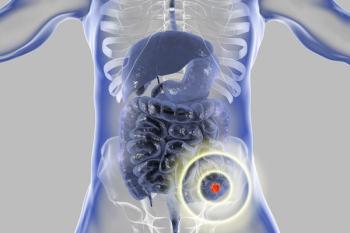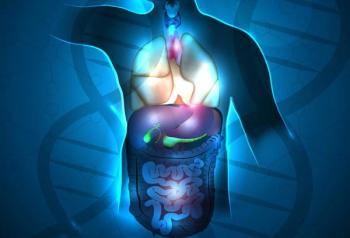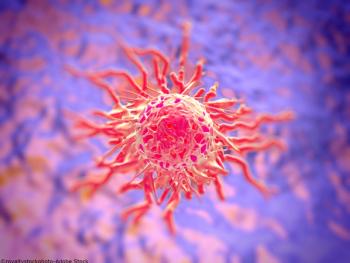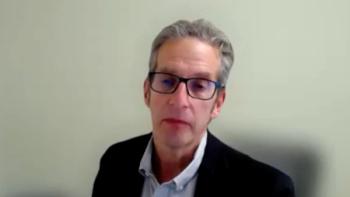![Point-of-care manufacturing, scalable manufacturing, and bringing the cost down [can help].](https://cdn.sanity.io/images/0vv8moc6/cancernetwork/55a279b707f0cd71181a5efa8b3d3cd864555701-3002x1684.png?w=350&fit=crop&auto=format)
- Oncology NEWS International Vol 6 No 9
- Volume 6
- Issue 9
Wynder Urges Nutrition as an Adjunctive Cancer Therapy
NEW YORK-In a presentation sponsored by the American Cancer Foundation, Ernst Wynder, MD, boiled down what he has learned from five decades of cancer research into three basic principles: Cancer is not an inevitable consequence of aging; cancer is usually due to metabolic overload; and cancer can be prevented by “listening to nature” without a thorough understanding of its molecular biology.
NEW YORKIn a presentation sponsored by the American Cancer Foundation, Ernst Wynder, MD, boiled down what he has learned from five decades of cancer research into three basic principles: Cancer is not an inevitable consequence of aging; cancer is usually due to metabolic overload; and cancer can be prevented by listening to nature without a thorough understanding of its molecular biology.
Dr. Wynder is founder and president of the American Health Foundation (AHF), an NCI-funded research organization that has a special emphasis on issues related to health education, particularly in children.
Dr. Wynder stressed his listen to nature theme by citing epidemiologic data from around the world that demonstrate a connection between cancer and lifestyle, beginning with his own pioneering work in 1950 showing the relationship between lung cancer and smoking.
That cancer is not inevitable can be shown by the decline in cancer of the stomach, which is related to reduced salt intake and higher intake of fruits and vegetables: Stomach cancer, the most common cancer in the United States in the 1930s, is now the least common.
Diet as a Cancer Preventive
Dr. Wynder noted that rates of cancer of the colon, breast, and prostate have fallen in recent years, due in large part to the estimated 15% drop in dietary fat in the US population in the last 20 years. Slowly our propaganda sinks in, and we are coming down to about a 35% fat diet, he said. The Japanese in the 1950s consumed only 10% of calories as fat, a diet that may be optimum in Dr. Wynders view, but their consumption is now up to 23%, and I am happy to note that it seems to be leveling off at 23%, he said.
In his talk at the American Society of Clinical Oncology meeting, Dr. Wynder used breast cancer to make his case for the use of diet as a cancer preventive. The first evidence was biological. In the 1940s, he said, it was shown that a high-fat diet in mice increased the yield of induced breast tumors, compared with mice on a low-fat diet. That was more than 50 years ago, and very few of us paid attention, Dr. Wynder said.
Researchers at the AHF have since shown that in tumor-induced animals, the more linoleic acid in the diet, the higher the tumor yield, a finding that correlates with epidemiologic findings of lower breast cancer rates in countries such as Greece, Spain, and Italy where use of olive oil, which is low in linoleic acid, predominates. Further, the AHF researchers have shown in animals that a diet low in linoleic acid decreases the risk of metastases from breast tumors.
Dr. Wynder mentioned several possible mechanisms of action that could explain the biologic effects of diet on carcinogenesis, ie, effects on metabolic pathways, gene expression, estrogen levels, and the possibility that a low-fat diet increases natural killer cell activity.
From looking at the global epidemiology of breast cancer risk, he has concluded that nothing can explain the global distribution of breast cancer except dietary fat, even though other factors play a role. He said there is a perfect correlation between levels of dietary fat consumption in a population and breast cancer incidence.
In postmenopausal women, for example, there is an 8 to 1 difference between US and Japanese breast cancer rates. I say to students, if you cannot learn anything from a difference of 8 to 1, how can you expect to learn anything from a 1.2 to 1 or 1.3 to 1 difference?
In terms of breast cancer survival, he said, in postmenopausal women, stage by stage, the Japanese do significantly better than women from England, a country with high fat intake. If we could show this difference for any kind of chemotherapeutic intervention, we would regard this as a major triumph. I am saying we need to listen to nature, understand what the Japanese data show, and apply them to our patient population.
Professor Richard Petos Lancet overview showed that breast cancer patients on adjuvant tamoxi-fen (Nolvadex) have a 16% improvement in survival. In Japan, he said, women taking tamoxifen have a 32% better survival than controls. If I am excited about 16%, why do I not get absolutely ecstatic about 32%? Dr. Wynder quipped. The conclusion is that if you combine tamoxifen with a low-fat diet, you do better than with tamoxifen alone.
Major Study Underway
After many years, he said, researchers have persuaded the NCI to fund a major intervention study on breast cancer and diet. Postmenopausal breast cancer patients with stage I and II disease treated with either adjuvant tamoxifen or chemotherapy are being randomized into a low-fat diet (15% of calories from fat) or a more typical American diet consisting of 30% calories from fat. The challenge, he said, was to accrue patients who would comply with the diet and to determine how to measure compliance. In the last three years, he said, we have attracted 30 centers willing to participate and have accrued 1,100 patients of our target of 2,500.
The key to the study, he said, in addition to committed physicians, is a group of 30 trained nutritionists who develop a close relationship with patients, both individually and in group sessions. He added that women are committed to the study because they have had breast cancer and want to reduce their risk of recurrence.
Preliminary results among the first 290 patients show that by the end of the first year on the 15% diet, fat intake and levels of omega-6 fatty acid decline significantly, compared with controls. Fat consumption is determined by 24-hour dietary recall, four-day dietary records, and measures of serum fatty acids.
Articles in this issue
about 28 years ago
IL-2 Shows Promise in Treating Hematologic Cancersabout 28 years ago
Studies Show Who Seeks Mammography and Whyabout 28 years ago
New Policy Board Enters Tobacco Frayabout 28 years ago
Index Quantifies Bone Disease in Prostate Cancerabout 28 years ago
Treating Other STDs May Reduce HIV Levels in the Semenabout 28 years ago
Bisphosphonates Improve QOL in Bone Lesion Patientsabout 28 years ago
Children Run Greatest Cancer Risk from Nuclear Testsabout 28 years ago
Trials of IV SNX-111 Paused, but Phase III Pain Trials Continueabout 28 years ago
IL-2 Termed ‘Gold Standard’ in Renal Cell Carcinomaabout 28 years ago
ACS Recommends Major Changes in Tobacco SettlementNewsletter
Stay up to date on recent advances in the multidisciplinary approach to cancer.



















































































